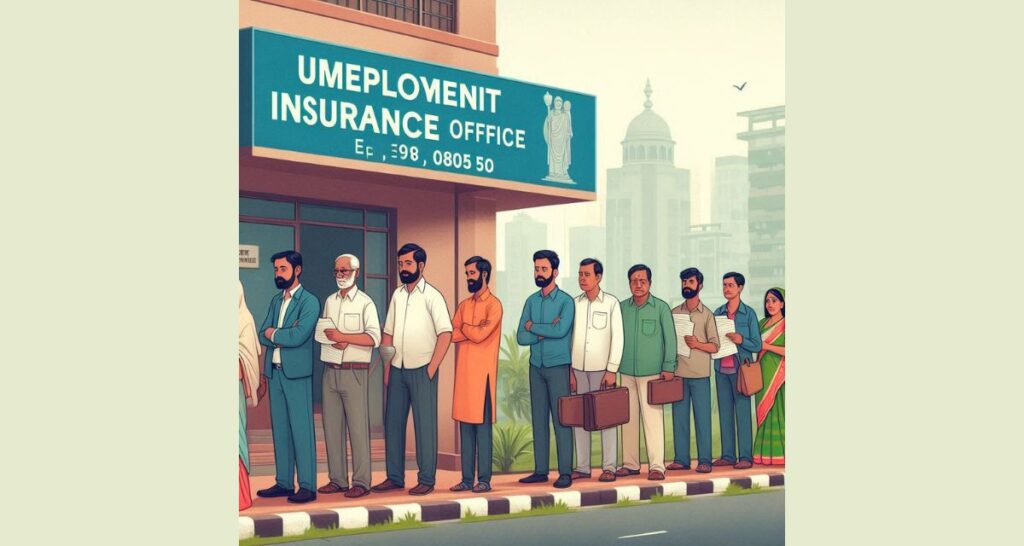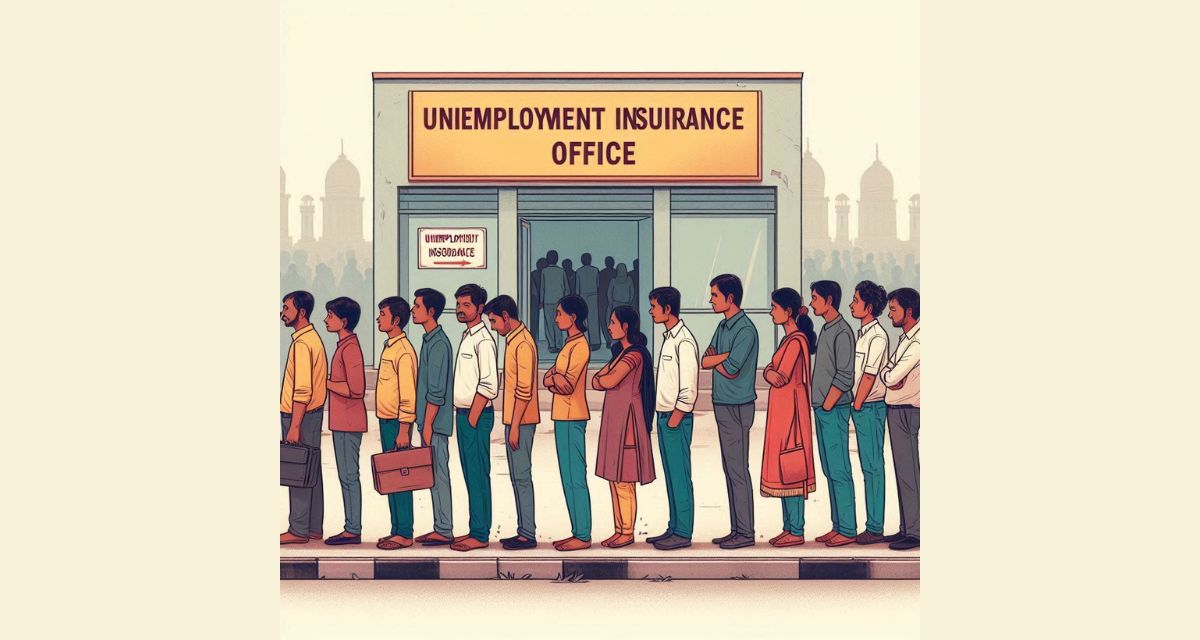In recent years, economic uncertainties and job losses have raised a critical question among India’s workforce: Currently, is there unemployment insurance in India? India has an infant social security structure and the phenomenon of unemployment insurance is not unfamiliar to the world but it is new to India. In this article, we shall discuss as a fact whether unemployment insurance is available in India, and how it operates in case of the options that are available if a worker is laid off.
Unemployment Insurance, Share of Unemployed Persons for which it is Available
Unemployment benefits are a method of state aid given to the people, who lost their workplaces due to circumstances beyond their control. It is normally supported by the government or employers and provides short-term monetary assistance in the periods before the person secures another job. Most developed nations such as the United States, Canada, and many nations in Europe have great employment insurance policies instituted; but what about the employment insurance in India? Let’s explore.

Existing Forms of Unemployment Support in India
Western countries have unemployment insurance programs but India does not have a program that is available to all inhabitants of the country. Nevertheless, there are a few programs that support the workers only partially and that is in case they get unemployed. The most well is the Rajiv Gandhi Shramik Kalyan Yojana (RGSKY) among the Employees’ State Insurance Corporation (ESIC).
However, for a limited period, the insured workers can be compensated by RGSKY after getting laid off. The scheme is available for workers in establishments where 10 or more employees are employed, and they must pay the ESIC. But this form of insurance is mainly for the working class employee or what we can term as the blue-collar worker and therefore leaves a large part of the Indian workforce and the huge informal sector, which is the most vulnerable workforce in the country without protection.
Thus, to answer the question of whether there is unemployment insurance in India, the conclusion is that, despite there being no proper unemployment insurance system, there are identified some programs that are associated with unemployment support.
Rajiv Gandhi Shramik Kalyan Yojana: A Brief Analysis of India’s Answer to Unemployment Insurance
To the best of the present author’s knowledge, the Rajiv Gandhi Shramik Kalyan Yojana as of 2024 is the closest India has to unemployment insurance. They said it was to assist insured employees who lose their jobs without their consent or through no fault of their own. It gives monetary support for some time according to the period of employment in the company.
Here’s how it works:
For the applicants to be eligible they have to have been insured under the ESIC for not less than three years.
Financial aid for a worker can be taken for a duration of up to 24 months depending on the tenure of the worker.
To determine the benefit rate it ranges from fifty percent of average daily wages in the first twelve months of unemployment and twenty-five percent in the next twelve months.
Although this scheme helps, it does not address the problem to the full extent since the former does not protect a large segment of Indian employees. The majority of workers, especially those in informal employment, are left out of such protections, raising the broader concern: The current legal structure of UI in India is organized as legal guarantees for the general workforce?

The Informal Sector: India’s Uninsured Majority
One of the largest obstacles to addressing there unemployment insurance in India is India’s extensive informal economy. Based on this report from International Labour Organization (ILO) more than 80% of the workers in India are in informal employment. This includes; daily paid workers, contract workers, Gig workers, and self-employed workers who are not like other employees.
The corresponding inadequate unemployment insurance for informal workers is a problem that has been noticeable the most after the COVID-19 pandemic revealed the frailty of this segment.
As a result, some state governments and policymakers have started pondering about unemployment insurance, or other kinds of compensation for informal workers. Still, up to the present, the answer to the question of whether there is unemployment insurance in India for informal employees remains negative.
New instructors, new strategies, and government changes
While India does not have an organized unemployment insurance mechanism, the government has recently launched programs to give money to the unemployed. The level of discourses on designing the enhanced UI has escalated in 2024, but more advances are required.
There is one interesting experience that can be mentioned — in 2018, The Employees’ State Insurance Corporation launched a new program called the Atal Beemit Vyakti Kalyan Yojana (ABVKY). Under this particular scheme, ESIC employees can apply for unemployment allowance if they have been retrenched from their jobs if the place of work has shut, down, or if they are permanently invalid.
The scheme was initially implemented on a pilot basis, but because of the increasing demand for such benefits, the pilot was later extended up to the year 2024. It pays 50 percent of the average daily wages for a maximum of 90 days as Sometimes people stay unemployed. Like the RGSKY program, this program does not help most of the workers as it only targets a specific few who undergo apprenticeship training.
The government is also planning to overcome unemployment issues through things such as Pradhan Mantri Shram Yogi Maandhan (PMSYM), which is a pension scheme for unorganized sector workers. The main purpose of such insurance is not to maintain the provision of employment in case of job loss but to ensure people are provided for upon retirement or reaching a certain age in their lives.
Unemployment insurance in India: the need for a more exhaustive policy
The employment scenario in India has shifted over the accruing years and hence there is an apparent need for a sound UI structure. Specifically, programs such as Rajiv Gandhi Shramik Kalyan Yojana and Atal Beemit Vyakti Kalyan Yojana, though provide amelioration, address little more than a fraction of the workforce. Hence, the debate on whether or not there is unemployment insurance in India or not should mean a lot to the large population of workers in India today, majoring in the informal segment.
Looking Ahead: What Can Be Done?
When starting the year 2024 debates over whether UI is necessary in India are emerging more acute. Many people have the impression that India can follow similar countries such as Germany or Canada, where unemployment insurance is obligatory, financed through employers’ and employees’ remunerations, and where benefits are computed based on earlier earnings.
Besides, measures aimed at improving unemployment insurance as well as making social security more liberal addressing the complexity of the Indian workforce is equally crucial. This might entail expanding pension coverage, health insurance retraining, and workplace skills development notably among the growing number of people in the informal economy. Since many activities can be run online nowadays, filing claims and administration of unemployment benefits ought to be made easier to be in a position to accommodate all workers.
Conclusion
So is there unemployment insurance in India? Quite surprisingly, the answer is twofold; yes and no. There are a few schemes like the Rajiv Gandhi Shramik Kalyan Yojana and Atal Beemit Vyakti Kalyan Yojana in India which are still confined only to employees of the Formal sector. The workforce of India is hugely inadequately shielded against unemployment and informal workers are even more vulnerable, leaving a significant part of them without unemployment insurance.







